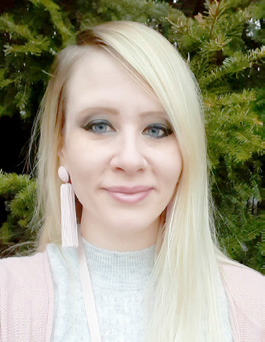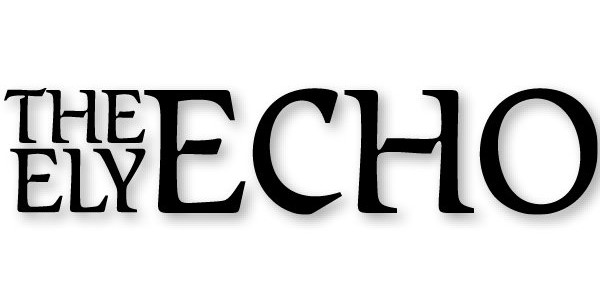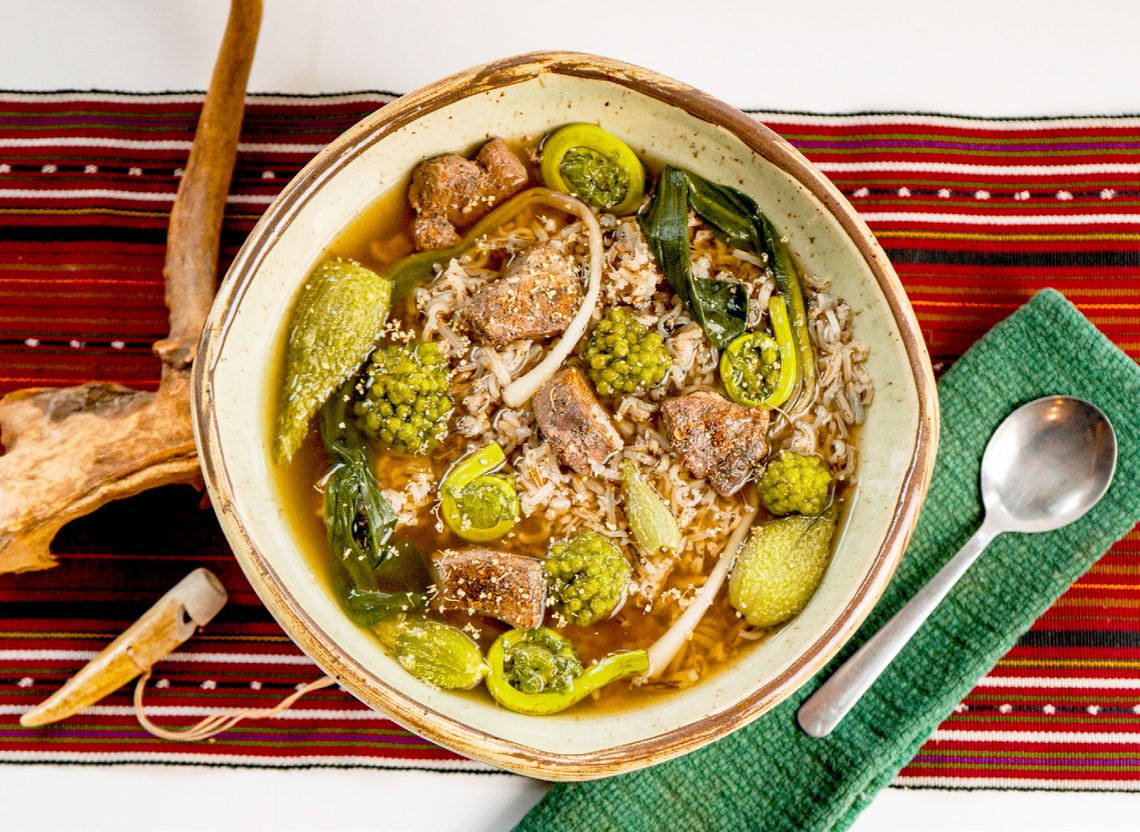Last summer, my mother’s cousin Bonnie, who has a cabin in Ely, was kind enough to let me look through her expansive recipe collection. While conversing about recipes, she told me about a milkweed soup that her maternal grandmother made for her many years ago.
Bonnie, who belongs to the Ho-Chunk Nation, said her grandmother was a skilled forager and cook. Bonnie never learned to make the soup, but said it was delicious and she wished she had the recipe.
Aside from milkweed, she recalls it contained meat and small pieces of yeast-leavened frybread dough that served as dumplings. I decided to reach out to the twice-featured past contributor to this column and Founder of Wiisinig LLC, Derek Nicholas, to see if he could help.
Derek indeed had a recipe that he was happy to share, though he does not use colonized ingredients such as what is used in frybread, so his recipe does not contain dumplings. He did mention that a good substitution would be dumplings made from corn masa and water. The timing of this article worked out perfectly, as Derek was recently featured in several news segments discussing an exciting career development. I asked Derek to tell us a bit more about his new adventure.
Q.) Hello again Derek, I’ve heard you have some news to share.
What have you been up to lately?
A.) Yes, I just released a cookbook called Through Food We Know Ourselves. Through Food We Know Ourselves is a restorative cookbook and cultural journey that explores the deep connection between food and identity for the Anishinaabeg people. Recipes within this book are inspired by legends, oral histories, and creative exploration -- filled with indigenous knowledge and cultural insights.
Q.) What was your goal for the cookbook and what makes it unique?
A.) The book aims to encourage readers to form a relationship with our food and to the land. Ultimately, reconnecting the foods to the land is an act of empowerment, a path to wellness, identity, and a way to bring joy and vitality into our homes and community. This book is unique as it truly represents what indigenous foods and ideologies represent. Giving context and stories behind why our traditional food systems shape who we are, and can bring so much value to our lives.
Q.) What are some of the recipes featured in the cookbook?
A.) There is a large array of recipes in the book, some that are more accessible and others that require time in the bush. To name a couple of accessible recipes, sunflower hazelnut cookies, various wild rice dishes, smoked fish, etc. On the contrary, yellow jacket soup, raccoon brains, and clay-baked ruffed grouse.
Q.) Where can people purchase your book?
A.) The links to purchase my book, Through Food We Know Ourselves, can be found on my website, https://www.wiisinigllc.com Physical copies can also be purchased on Blurb.com, https://www. blurb.com/b/12492480-through-food-we-know-ourselves Ebooks can be purchased on Google Play, https://play.google.com/ store/books/details?id=E5VyEQAAQBAJ Q.) What are you working on next (plans/projects and or goals)?
A.) The next project is to build a cultural camp, the goal is for youth to be able to come, make long-lasting relationships, and be a space that is rooted in culture. This is going to be a very big project and will take time to achieve what I have envisioned. And of course, a couple of new ideas for another cookbook are already circulating in my mind (I can’t spoil the surprise just yet). To learn more about my work, follow us on social media @wiisinigllc or visit our website https://www.wiisinigllc.com
VENISON MILKWEED SOUP (AS FEATURED IN THROUGH FOOD WE KNOW OURSELVES)
Ingredients:
1 1/2 pounds venison straps, cut into 1-inch cubes
Douglas fir smoked salt
Prickly ash, ground
1 tablespoon animal tallow
24 fiddlehead ferns
12 ramps
12 milkweed seed pods, halved and seeded
10 cups venison stock
24 milkweed flower buds
1 1/2 cups “soup rice” (wild rice), cooked
Basswood flowers for garnishing
Instructions:
Season the venison on all sides with smoked salt and prickly ash. Place a large soup pot over high heat with the animal tallow. Sear the venison until nicely browned. Add the fiddleheads, ramps, and milkweed seed pods. Cook until softened. Pour in the venison stock. Bring to a simmer. Cook until the venison and vegetables are tender. Add the milkweed flower buds. Simmer for an additional 2 minutes. Stir in the wild rice and allow to heat through. Garnish with basswood flowers.
Yield: 6 servings.
Derek’s Milkweed Notes and Advice:
Milkweed is called Zhaabozigan in Anishinaabemowin. It is great for eating, but it also has a few different medicinal abilities. When harvesting milkweed or any plant, be sure to offer tobacco, state who you are, and specify what your intentions are. When you respect a plant in this manner, they will recognize you, and a relationship will begin to develop. I like to harvest milkweed at three different stages, generally from July to August. First, I harvest the young shoots as they first appear in the early summer. Second, the young flower buds (before they open and produce flowers). Lastly, the young seed pods. The young shoots are best seared and cooked like asparagus, making them a delicious side dish to any summer meal. The young flower buds are best tossed into soups. With the young seed pods, I will either fry them whole or slice them in half, remove the seeds, and saute them. Once the seed pods become mature, they will become fibrous and no longer good for eating. Sustainability tips: Monarch caterpillars and butterflies, and other pollinators need milkweed to thrive and keep their populations healthy. Therefore, it is extremely important to harvest sustainably. Here are some rules I live by when harvesting milkweed.
1. Count 13, pick 1. After counting 13 plants you can then pick 1.
2. When you harvest either the flower buds or seed pods, only pick 1 per plant.
3. If the plant has bug bites or a caterpillar is on the plant, leave it be; that plant has already been spoken for.












